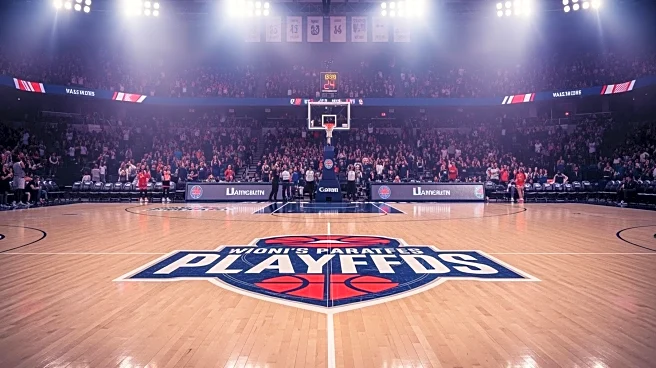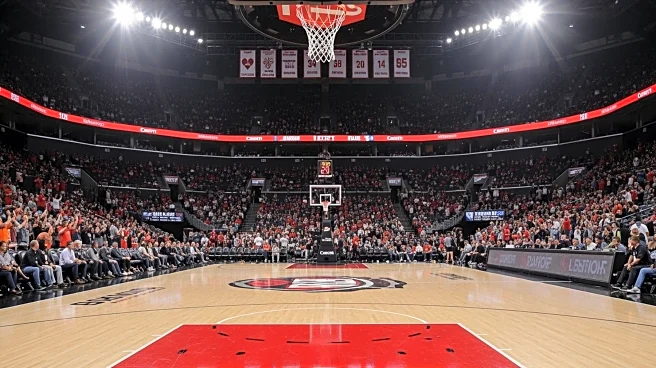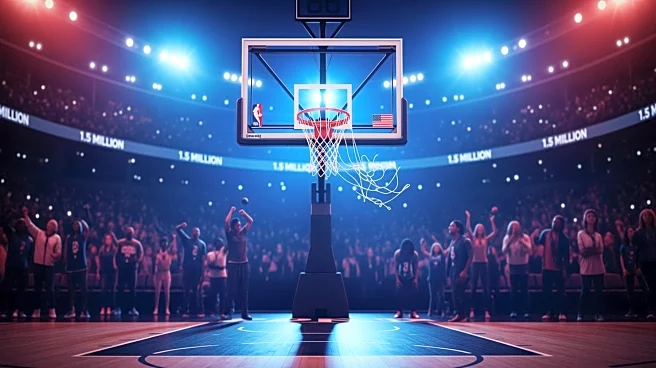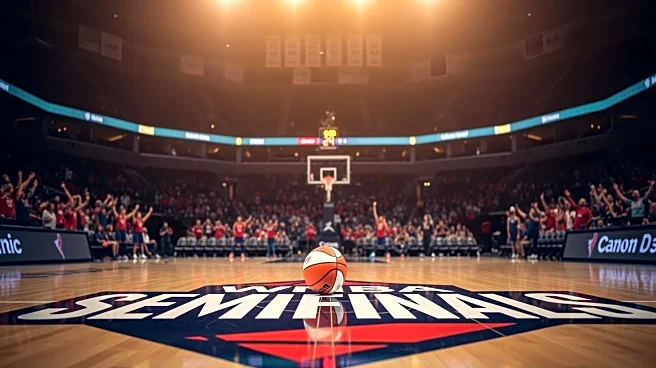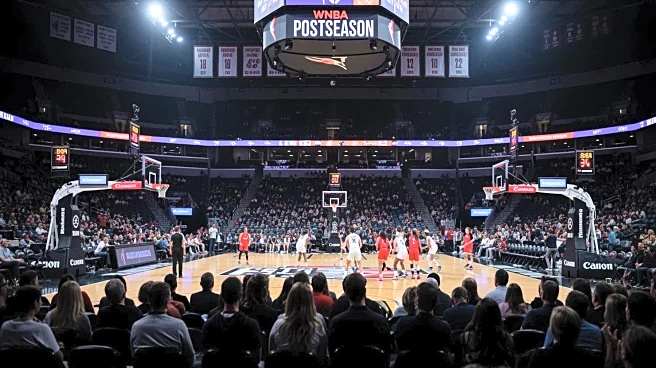What's Happening?
The WNBA has experienced significant growth in television ratings, marking the 2025 season as the most-watched ever across ESPN networks. According to ESPN, the regular season averaged 1.3 million viewers,
a 6% increase from the previous year. This growth is attributed to the increased attention brought by Indiana Fever's Caitlin Clark, despite her absence due to injury during the postseason. The 2025 WNBA Finals between the Las Vegas Aces and Phoenix Mercury also saw record viewership, with Game 1 being the most-watched since the league's inaugural season in 1997. ESPN's announcement highlights the league's ongoing momentum and historical achievements in viewership.
Why It's Important?
The rise in WNBA viewership signifies a growing interest in women's sports, potentially leading to increased sponsorships, media coverage, and investment in the league. This growth can enhance the visibility and marketability of WNBA players, contributing to broader societal recognition of women's sports. The league's ability to maintain high ratings without Caitlin Clark's participation suggests a robust fan base and interest in the sport itself, which could lead to further expansion and development opportunities. Stakeholders in sports media and marketing may benefit from aligning with the WNBA's upward trajectory.
What's Next?
As the WNBA prepares for the 2026 season, the league is likely to focus on capitalizing on its current momentum. This may involve strategic marketing campaigns, enhanced media partnerships, and potential expansion of teams or games. The return of Caitlin Clark could further boost viewership and fan engagement. Additionally, the league might explore new initiatives to sustain and grow its audience, including digital content strategies and community engagement efforts. Stakeholders will be watching closely to see how the WNBA leverages its recent success to drive future growth.
Beyond the Headlines
The WNBA's record ratings could influence broader cultural perceptions of women's sports, challenging traditional gender norms and promoting equality in sports coverage. This shift may encourage other women's leagues to pursue similar growth strategies, fostering a more inclusive sports environment. The league's success also highlights the potential for women's sports to attract significant audiences, which could lead to increased advocacy for equal pay and resources in sports. Long-term, this trend may contribute to a more balanced representation of athletes across genders in media and sponsorships.



